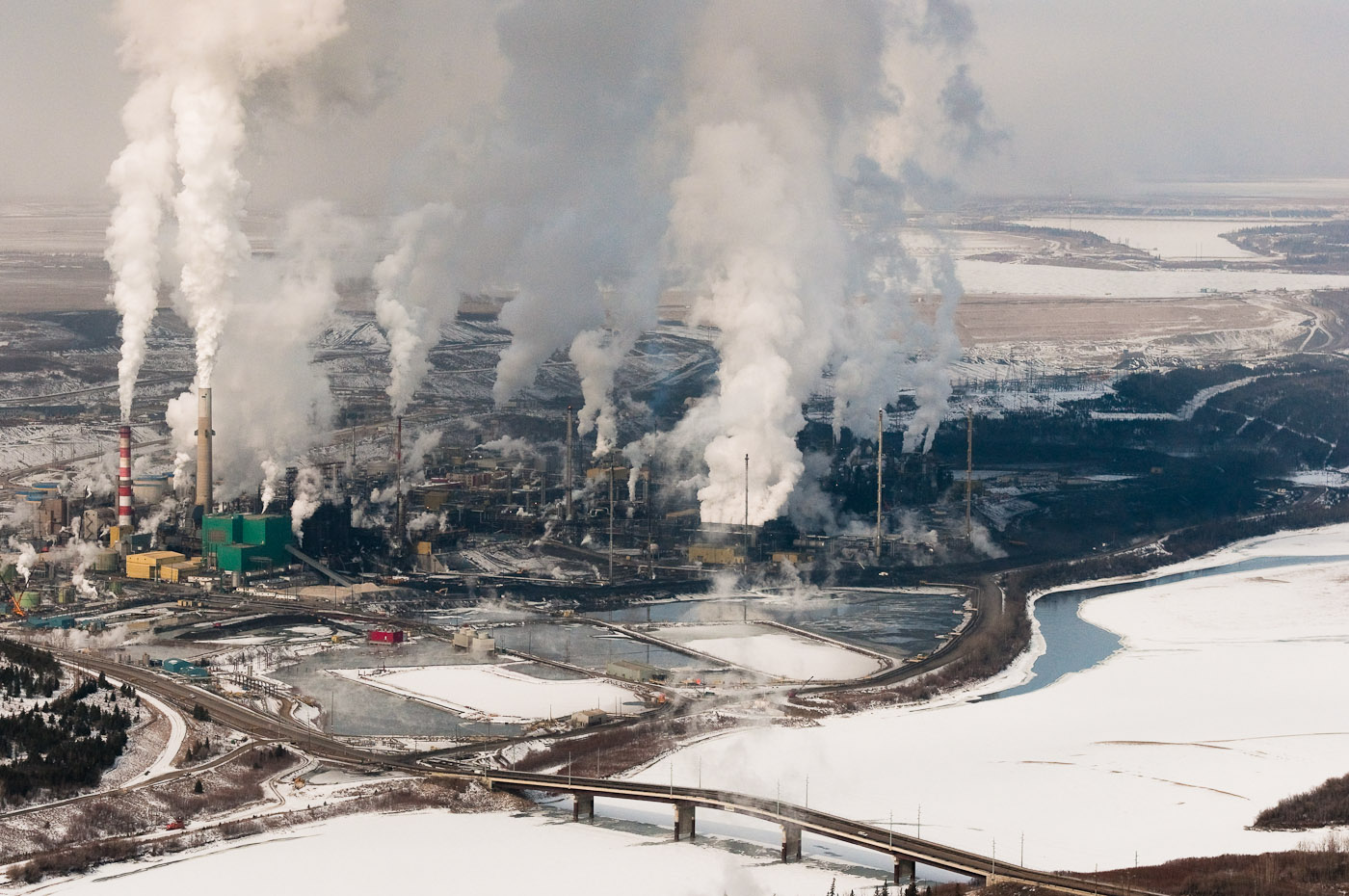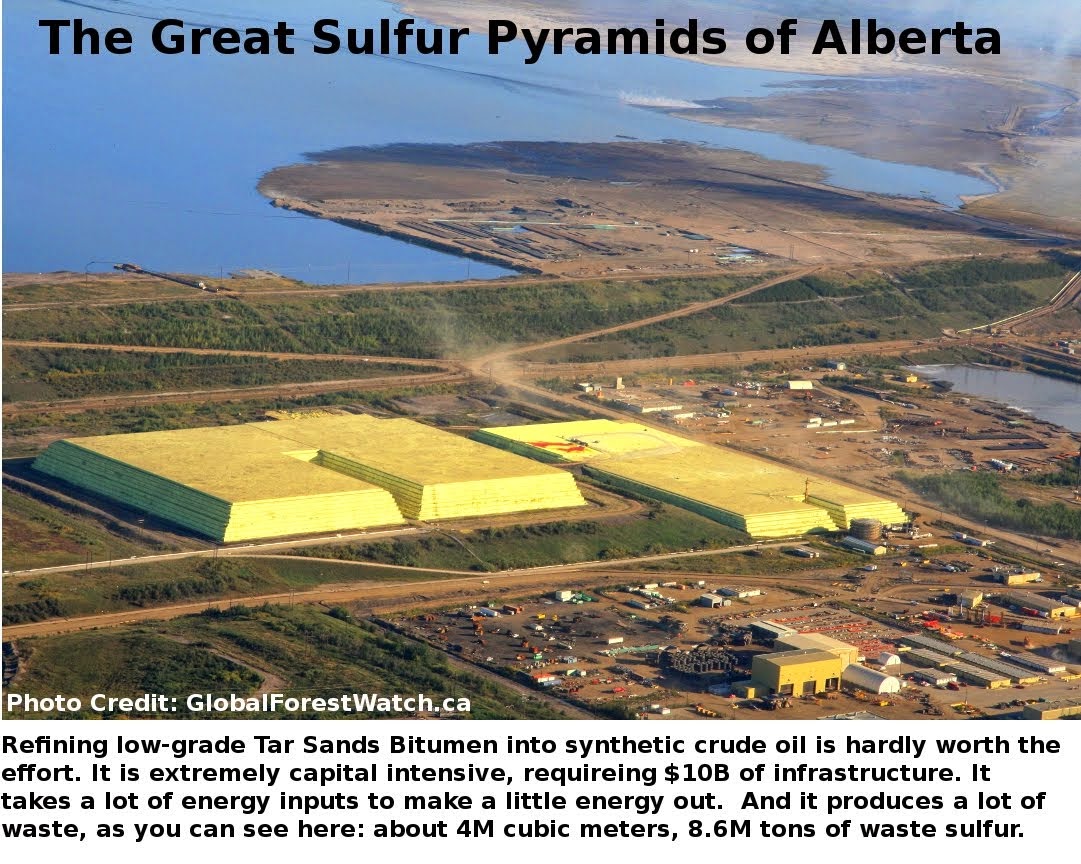I've been studying the propane shortage and other related issues
from the Polar Vortex, and wet corn harvest).
Connection between Alberta Tar Sands Mining
and Seneca Lake NGL/LPG Storage

Extra-heavy Bitumen from Alberta + NGLs from Marcellus = DILBIT
Tar Sands imports are about 91% of 2.6M bbls/day.
Source: http://www.eia.gov/dnav/pet/pet_move_impcus_a2_nus_epc0_im0_mbblpd_a.htm
Canadian "Crude" output is ~9% is Syncrude, ~9% is Tight Oil, ~82% is Dibit
So total tar sands output from Canada is about 82+9=91%.
(I pulled this from many sources so tough to get an exact cite)
for some time.
I hope this is helpful. Citations are included to original sources.
I hope this is helpful. Citations are included to original sources.
http://williamahuston.blogspot.com/2014/03/winter-propane-shortage-and-nyseneca.html
I've just updated this blog post with something new I found
from an industry presentation showing that the effects of
propane exports upon last winter's shortage was ~3.5x
that of the result of increased consumer demand (includingI've just updated this blog post with something new I found
from an industry presentation showing that the effects of
propane exports upon last winter's shortage was ~3.5x
from the Polar Vortex, and wet corn harvest).
Annotated:
 |
| Page 9 of this (annotations: BH) http://www.slideshare.net/ErikOlbeter/icf-2014-propane-markets-outlook |
Also check out the testimony of Kevin Bernstein (spokesman for Crestwood!!!)
explaining that the shortage was caused by the partial reversal of the
TEPPCO pipeline (that's the one that terminates at the storage facility
across the street from Crestwood) to send valuable Marcellus NGLs to
the Gulf Coast for refining.
Bernstein video is here:
http://williamahuston.blogspot.com/2014/03/winter-propane-shortage-and-nyseneca.html
Also check the National Propane Gas Assoc. spokesman Richard Roldan
TEPPCO pipeline (that's the one that terminates at the storage facility
across the street from Crestwood) to send valuable Marcellus NGLs to
the Gulf Coast for refining.
Bernstein video is here:
http://williamahuston.blogspot.com/2014/03/winter-propane-shortage-and-nyseneca.html
Also check the National Propane Gas Assoc. spokesman Richard Roldan
explaining the Tar Sands connection.


Cochin Pipeline (recently reversed) sends valuable NGLs from Marcellus Wet-Gas
regions (E.OH, WV, SW PA) to Canada for Tar Sands Development.
regions (E.OH, WV, SW PA) to Canada for Tar Sands Development.
Connection between Alberta Tar Sands Mining
and Seneca Lake NGL/LPG Storage
There is a popular misnomer used by almost every mainstream
media outlet, from Wikipedia, to the NY TImes, to PRI's Living On Earth:
"Alberta Oil Sands" or "Tar Sands Oil".
media outlet, from Wikipedia, to the NY TImes, to PRI's Living On Earth:
"Alberta Oil Sands" or "Tar Sands Oil".
Friends-- THERE IS NO SUCH THING as TAR SANDS OIL.
The product being shipped in pipelines from Alberta (like what spilled in Kalamazoo MI,
Mayflower Arkansas and other places) is mostly a product called DILBIT (Diluted Bitumen).

Mayflower Arkansas and other places) is mostly a product called DILBIT (Diluted Bitumen).

Dilbit IS NOT OIL:


The reason why it is so important to get this exactly correct is because of the implications.
THEY ARE MINING BITUMEN in Alberta, and Bitumen is GARBAGE.
Like shale-gas and shale oil, it is literally the "Bottom of the Barrel",
the dregs of hydrocarbons.
Like shale-gas and shale oil, it is literally the "Bottom of the Barrel",
the dregs of hydrocarbons.
Properties of mining HYDROCARBON DREGS
- DREGS: Bitumen mining (tar sands), fracking shale
- Mining/extraction difficult
- very low EROEI
- capital intensive
- energy intensive
- High environmental costs
- High transport costs
- Low quality product
- Requires great effort to "upgrade" and synthesize tar sands
into useable fuels
If you look at old refinery diagrams, "bitumen" or "asphalt" are commonly called
"residuum", or "bottoms product", i.e., shit. Waste product.


Bitumen cannot be transported in a pipeline. They must EITHER add dilutants
to it, e.g., DILBIT (diluted bitumen) using NGLs from the Marcellus (this is
the connection to Seneca Lake Storage and the propane shortage)...
to it, e.g., DILBIT (diluted bitumen) using NGLs from the Marcellus (this is
the connection to Seneca Lake Storage and the propane shortage)...
...or "Upgrade" some of the bitumen into lighter products, by smashing the longer hydrocarbon molecules at extremely high energy levels (up to 1,500'C-3,000'C), which are near those found in a thermite reaction (the melting point of steel, 3,700'C) or the surface of the sun (5,500'C).

~$10B Suncor Upgrader in Ft. McMurray, Alberta
So they are "assembling" crude oil from component parts:
Extra-heavy Bitumen from Alberta + NGLs from Marcellus = DILBIT
DILBIT => sent to refineries to make "refined products"
(gasoline, kerosene/jet fuel, diesel, heating oil, lubricating oils, etc).
(gasoline, kerosene/jet fuel, diesel, heating oil, lubricating oils, etc).
"Upgrading" bitumen is also extremely polluting. Check out the Great Sulfur Pyramids
of Alberta, objects so large they can be seen from space.
Some notes about the amount of tar-sands product coming into the US today,
by my estimate, about %14 of total US refinery inputs are Tar Sands products.
US production of Crude Oil is about 7M bbls/day.
Tar Sands imports are about 91% of 2.6M bbls/day.
Source: http://www.eia.gov/dnav/pet/pet_move_impcus_a2_nus_epc0_im0_mbblpd_a.htm
Total US imports of crude oil is 7.4M bbls/day.
Source: ibid
Canadian "Crude" output is ~9% is Syncrude, ~9% is Tight Oil, ~82% is Dibit
So total tar sands output from Canada is about 82+9=91%.
(I pulled this from many sources so tough to get an exact cite)
Total domestic crude oil consumption = ~14.4M bbls/day
of which ~2.3M bbls/day is from tar sands, or about 14%.
I hope this is helpful--
WmH
WmH


No comments:
Post a Comment